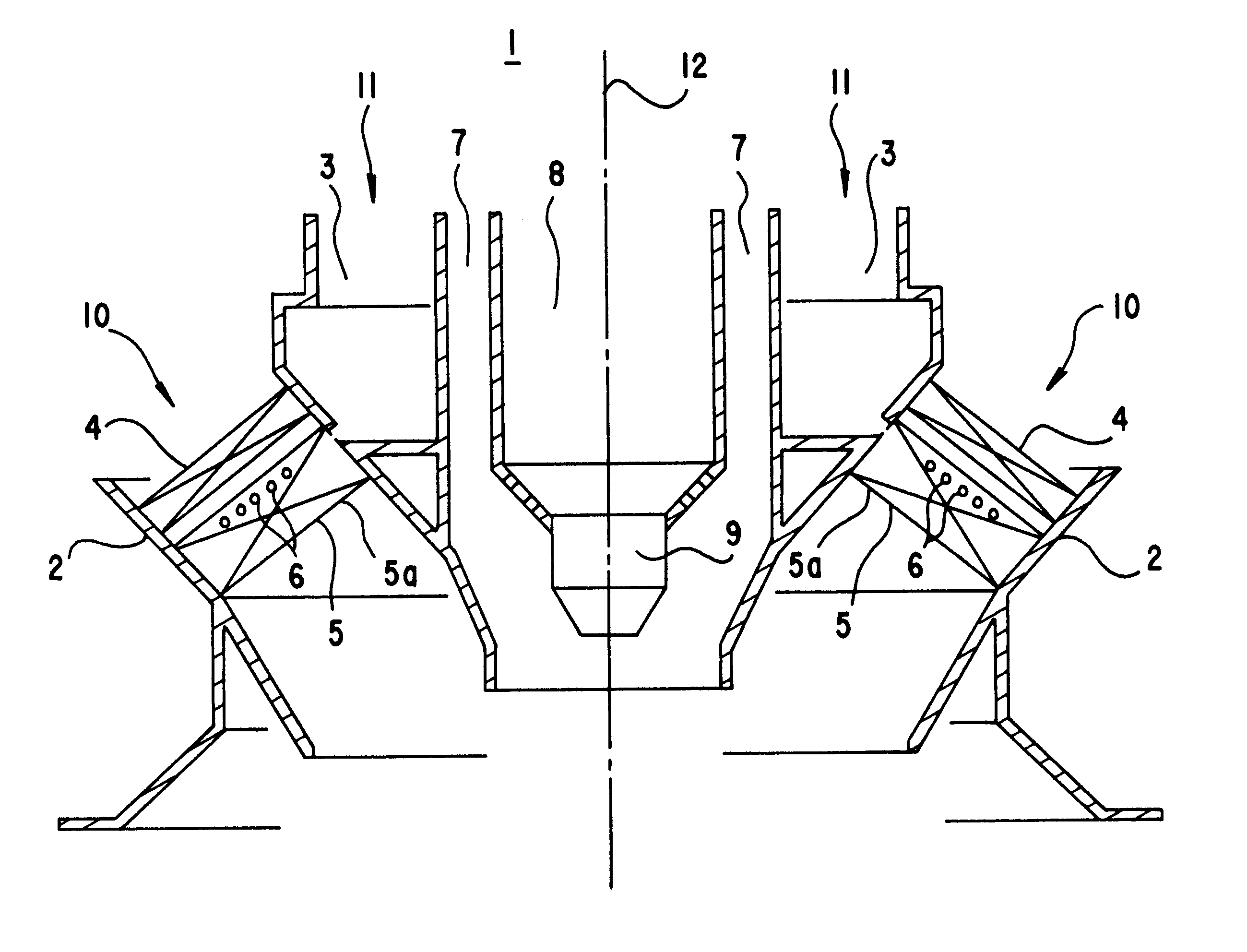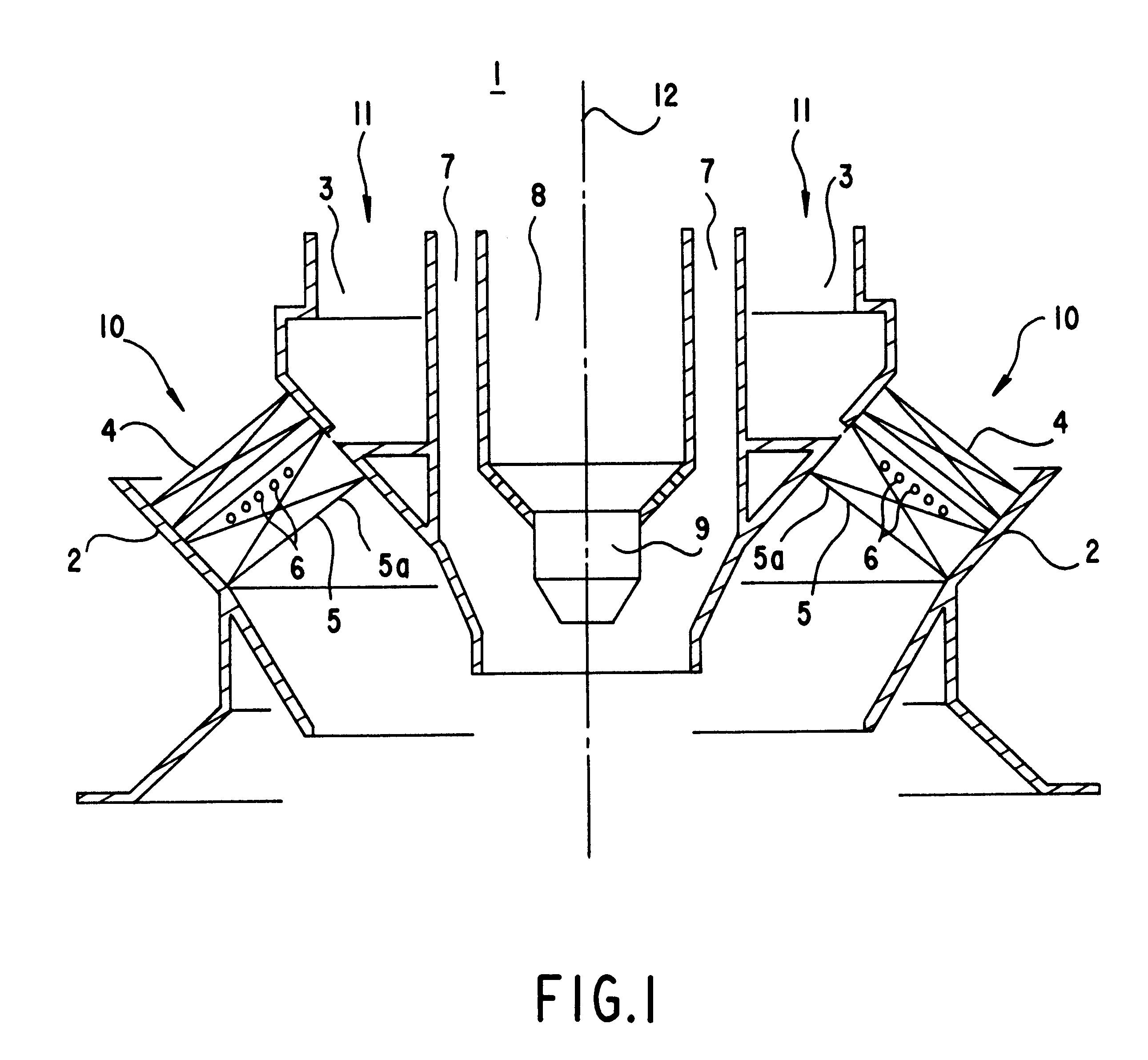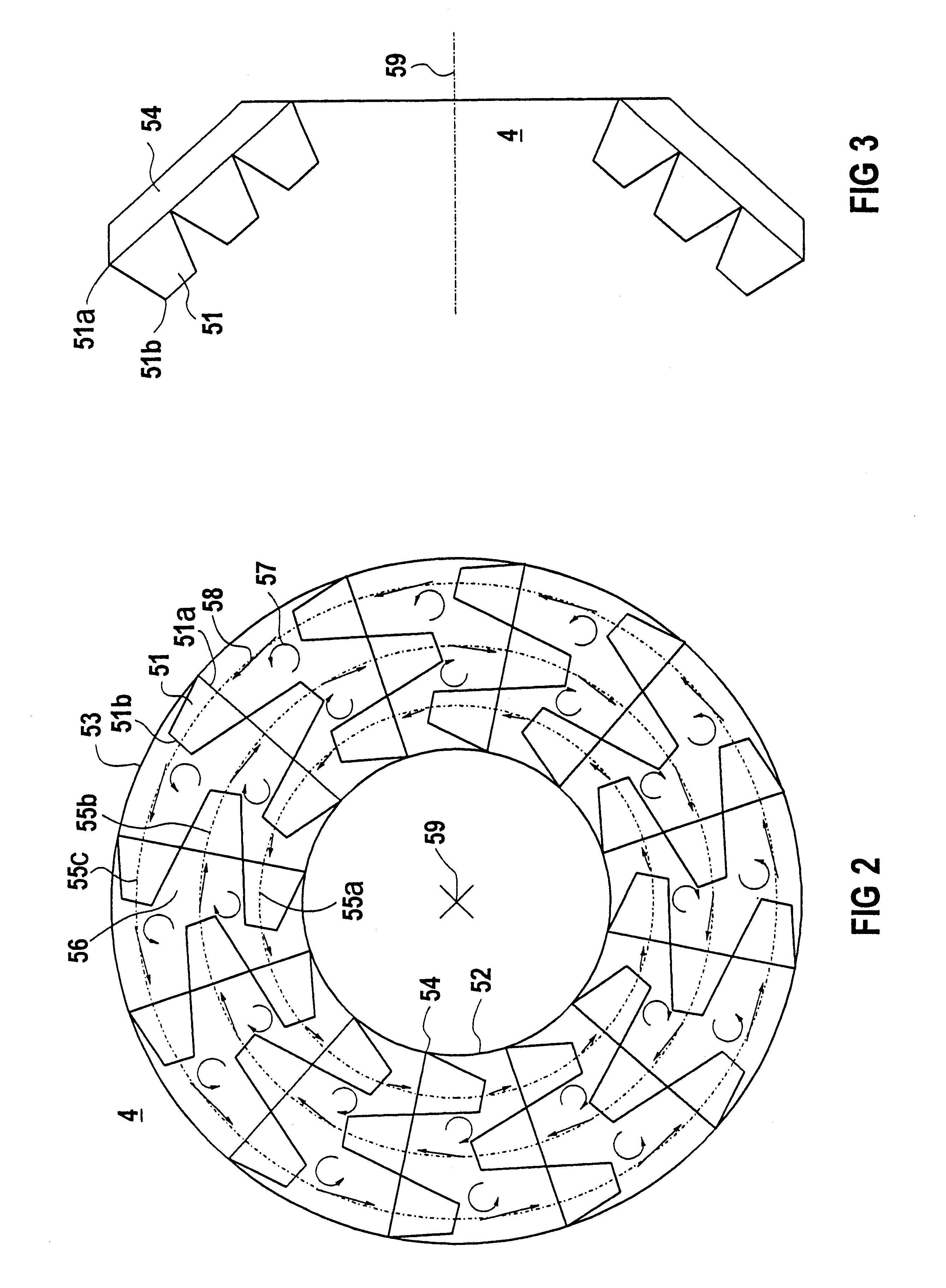Burner for fluidic fuels having multiple groups of vortex generating elements
a technology of vortex elements and burners, which is applied in the direction of machines/engines, combustion types, lighting and heating apparatus, etc., can solve the problems of achieve small pressure loss caused by vortex elements, improve the spatial homogeneity of mixtures, and reduce the effect of mixing combustion air and fuel
- Summary
- Abstract
- Description
- Claims
- Application Information
AI Technical Summary
Benefits of technology
Problems solved by technology
Method used
Image
Examples
Embodiment Construction
Referring now to the figures of the drawings in detail and first, particularly, to FIG. 1 thereof, there is seen a hybrid burner 1, which is approximately rotationally symmetrical with regard to an axis 12. A pilot burner 9, which is directed along the axis 12 and has a fuel-feed duct 8 and an annular air-feed duct 7 concentrically enclosing the latter, is concentrically surrounded by an annular fuel duct 3. This annular fuel duct 3 is enclosed at the bottom, i.e. partly concentrically, by an annular air-feed duct 2. A swirl blade ring 5, which is shown diagrammatically, is fitted in this annular air-feed duct 2. At least one of these swirl blades 5 is constructed as a hollow blade 5a. The hollow blade 5a has an inlet 6 which is formed by a plurality of openings and is intended for a fuel feed. The annular fuel duct 3 leads into this hollow blade 5a. A diagrammatically illustrated vortex element 4 is fitted in the air duct 2 on the inflow side of the swirl-blade ring 5.
The hybrid bu...
PUM
 Login to View More
Login to View More Abstract
Description
Claims
Application Information
 Login to View More
Login to View More - R&D
- Intellectual Property
- Life Sciences
- Materials
- Tech Scout
- Unparalleled Data Quality
- Higher Quality Content
- 60% Fewer Hallucinations
Browse by: Latest US Patents, China's latest patents, Technical Efficacy Thesaurus, Application Domain, Technology Topic, Popular Technical Reports.
© 2025 PatSnap. All rights reserved.Legal|Privacy policy|Modern Slavery Act Transparency Statement|Sitemap|About US| Contact US: help@patsnap.com



